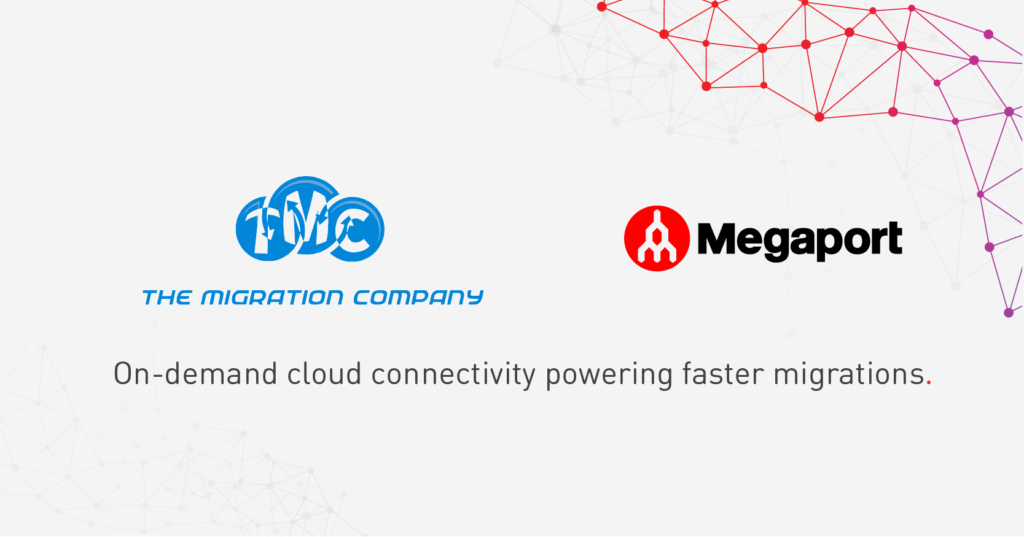
What is API-First Networking?
- Cloud networking
- October 7, 2025
- RSS Feed
By Todd Wenzel, Solutions Architect
When you build your network with APIs at its core, you give your business a competitive edge. Here’s how to do it.
Application Programming Interfaces (APIs) have become ubiquitous with modern networks for good reason. As companies use more service providers, endpoints, and software platforms, APIs help them get the most possible utility from their data with the least possible effort.
APIs enable different applications and endpoints across your network to talk to each other, defining how one system can request data and actions from another. As networks become increasingly virtual, interconnected, and distributed across different layers and applications, APIs become more valuable, keeping these parts connected and consistent with each other.
But simply integrating APIs into your existing network is no longer the ultimate goal. Enter the API-first network: a network built with APIs at its core, allowing users to control and automate their network entirely through software.
Accessing and managing your entire network via APIs will give business a competitive edge – and it doesn’t have to be difficult to achieve.
What is an API-first network?
Unlike API-based integration, which refers to using APIs to connect or extend an existing system, API-first means the network has been built from the ground up to be fully controlled and automated by APIs, before any manual interface or traditional management systems are considered. An API-first network prioritizes programmability, automation, and integration with other systems from day one.
To build an API-first network, teams must:
- choose platforms with strong APIs, like NaaS providers that offer full network control via APIs.
- design for automation, treating their network like code as they build it to make it versioned, testable, and repeatable.
- integrate it with platforms that allow for continuous integration/continuous deployment, monitoring, and orchestration.
- use clear API documentation and consistent practices to standardize orchestration.
- apply security and governance measures like authentication, role-based access, and usage monitoring.
The role of APIs in network automation
APIs are the core enabler of network automation. By replacing manual tasks with code, API-first networks standardize actions by using consistent commands across different systems, and speed tasks up by automating changes instantly – no waiting, no tickets.
API-first networks have the ability to:
- let systems create, update, and delete network connections automatically
- trigger changes based on events (like scaling up apps)
- integrate networks with DevOps tools (like Terraform)
- reduce human oversight and error by removing manual network management steps
- instantly spin up or tear down network connectivity based on current needs
- seamlessly connect to multiple cloud providers using automated workflows
- pull live network data and trigger alerts or actions when issues are detected.
These capabilities support use cases like:
- rapid data center provisioning
- automated cloud failover
- project- or time-based bandwidth scaling
- self-service customer portals
- automatic multicloud routing
- network-as-code deployments
- real-time usage reporting.
Traditional vs. API-first
- Traditional: A network engineer logs on to a portal or CLI, manually configures their routers or switches, and submits a ticket for approval. Provisioning takes hours or days.
- API-first: A script or application calls the network API to create a connection instantly – no manual steps, no tickets. Provisioning takes seconds or minutes.
Business benefits of API-driven networking
While teams can get some of the benefits by incorporating APIs into a traditional network, by adopting an API-first approach, you’ll completely maximize these benefits from end to end and with minimal effort.
- Faster time to market: New services and connections can be deployed in minutes, not days.
- Reduced manual error and operational overhead: Automation replaces repetitive tasks, lowering the risk of misconfigurations.
- Agile hybrid and multicloud strategies: Easily connect and scale across different environments using consistent APIs.
- Improved customer experiences: Faster response times and fewer outages equal more responsive IT for better customer service.
- Scalability on demand: Networks can automatically grow or shrink based on business needs.
- DevOps workflow integration: Teams can manage their network infrastructure the same way they manage code.
- Visibility and control: APIs provide real-time data and precise control over network behavior.
Considerations of adopting API-first networking
Many trusted vendors offer their own APIs to complement the services they provide, including many cloud providers (like AWS), hardware vendors (like Cisco), network management platforms (like SolarWinds), security vendors (like Fortinet), and NaaS providers (like Megaport).
If you want to create an API-first network, by far the easiest way to get started is to look for existing APIs from these vendors to support the capabilities you need – they’ll be faster, more secure, and easier to maintain. Building your own APIs is only necessary if no vendor offers what you need, or if you want deep customization specific to your business.
When incorporating network APIs, keep the following strategic considerations in mind:
- Integration with DevOps workflows: Ensure your APIs support tools like Terraform, Ansible, and continuous integration/continuous deployment pipelines for seamless automation.
- Vendor interoperability: Choose APIs that follow open standards or are well-documented so they work across different platforms and providers.
- Security and governance: Implement strong authentication, role-based access controls, and auditing to protect and monitor API usage.
- Scalability and performance: Assess whether the chosen APIs can handle your expected volume of inputs and support real-time operations.
- API documentation and support: Good documentation, software development kits, and vendor support are critical for fast adoption and troubleshooting.
- Versioning and stability: Ensure the APIs are stable, backward-compatible, and versioned properly to avoid breaking changes.
- Monitoring and observability: Look for APIs that expose metrics and logs so you can track usage, performance, and failures.
Getting started with API-first networking
Deploying a truly API-first network requires some initial effort, but is well worth the investment.
1. Audit current infrastructure
- Evaluate how your network is currently managed—manual vs. automated, hardware vs. virtual, vendor diversity—to determine what upgrades or extensions are required to become API-ready.
- Identify components across your network infrastructure that lack API access or are difficult to automate. These components should be flagged for replacement with API-first alternatives when possible, or at the very least, isolated from critical automation workflows to avoid becoming bottlenecks.
2. Identify automation opportunities
- Look for high-effort, repeatable tasks like provisioning, scaling, monitoring, or failover that could be API-driven.
- Prioritize use cases that align with your key business goals, like faster service delivery or hybrid cloud agility.
3. Align with DevOps and NetOps teams
- Bring everyone together early – developers, network engineers, and ops teams.
- Define shared goals and workflows that will ensure your API-first network fits into existing continuous improvement/continuous deployment pipelines or infrastructure-as-code practices.
4. Choose API-first vendors and tools
- Select platforms and tools for your network that are built for full API control – bonus points if they offer API-first features like a proprietary Terraform provider.
- Evaluate documentation, software development kits, support, and versioning policies to make sure you’re on the right path.
5. Develop standards and governance
- Define and document internal best practices for how your APIs will be used, secured, and maintained.
- Implement access controls, rate limits, and audit logs for safe operation.
6. Build or refactor workflows around APIs
- Replace manual network tasks with automated scripts, templates, and services.
- Integrate network provisioning, monitoring, and scaling into your DevOps toolchains.
7. Test, monitor, and iterate
- Run pilots with isolated use cases, monitor results, and adjust as needed.
- Use metrics and feedback to continuously improve API usage and coverage.
8. Educate and scale
- Train teams on how to work with network APIs and infrastructure as code.
- Gradually expand automation across your entire network environment.
The future of networking is programmable
When you adopt an API-first network, you set up your business for long-term success, making your operations easier to manage and scale as well as making it far easier to adopt AIOps and big data applications into your network. Whether you’re on a virtualization journey or not, you’ll future-proof your business operations.
Incorporate APIs and Terraform across your network with Megaport. Explore our API documentation and our Terraform documentation to get started.
Virtualize your entire network with Megaport. Book a demo to see for yourself.





